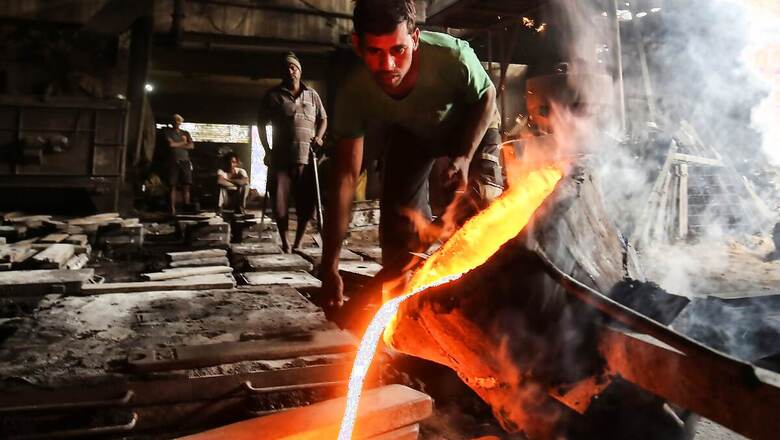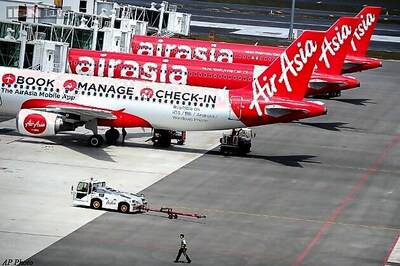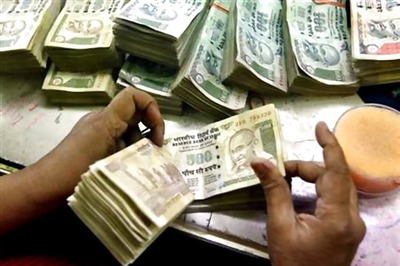
views
According to data released by National Statistical Office (NSO) on Monday, all key sectors except agriculture witnessed contractions. The construction sector saw a whopping drop of 50.3%, while the manufacturing industry witnessed a 39.3% fall. On the other hand, trade, hotels, transport, communication and services related to broadcasting contracted 47%.
The Gross Domestic Product (GDP) data for the first quarter of the ongoing financial year said that the country witnessed its worst contraction ever. India’s GDP for the April-June quarter nosedived by 23.9%, as per provisional estimates released by the Ministry of Statistics and Programme Implementation (MoSPI).
The GDP had expanded by 5.2% in the corresponding quarter of 2019-20. The GDP for the preceding January-March quarter of 2019-20 had witnessed a growth of 3.1%.
Most indicators have shown that the initial improvement in June tapered off in July. Experts opine that the economic recovery is yet to hold ground. Electricity use and fuel consumption show how recovery in industrial output could be long drawn.
The gross value added (GVA) at basic price at constant terms during the June quarter shrunk 22.8%. The GVA at Basic Price at Current Prices slipped 20.6% in the first quarter.
While India may not be officially into recession because that is generally identified by a GDP contraction in two straight quarters, but weak investment, capital spending and consumption demand will keep negatively impacting the economy.
Moreover, data collection, too, was affected due to the pandemic.
“With a view to contain spread of the Covid-19 pandemic, restrictions were imposed on the economic activities not deemed essential, as also on the movement of people from 25 March, 2020. In these circumstances, the usual data sources were substituted by alternatives like GST, interactions with professional bodies etc. and which were clearly limited,” said Ministry of Statistics & Programme Implementation in a statement on Monday.
As per the Centre for Monitoring Indian Economy (CMIE), salaried jobs have suffered the biggest hit during the lockdown, with total loss estimated to be at 18.9 million during April-July. In May 2020, global research and rating agency, CRISIL, said that India’s fourth recession since Independence, first since liberalisation, and perhaps the worst to date, is here.
“In the past 69 years, India has seen a recession only thrice – as per available data – in fiscals 1958, 1966 and 1980. The reason was the same each time – a monsoon shock that hit agriculture, then a sizeable part of the economy. The recession staring at us today is different,” it said.
Eventually, agriculture, forestry and fishing industry were the only ones that witnessed a growth of 3.4% in the June quarter.
The contraction in the Indian economy in the June quarter turned out to be one of the worst among the G20 countries. So far, the UK economy had seen the biggest slump in June quarter GDP among the top 20 economies of the world, with a 21.7% year-on-year plunge — its deepest recession on record.
High frequency indicators such as index of industrial production (IIP), PMI manufacturing, auto sales, among others, contracted sharply during the June quarter. IIP contracted by an average 36% during April-June, while commercial vehicle sales contracted 84.8% during the same quarter.
Meanwhile, construction could add as many as one in four of the incremental gross jobs. Both labour-intensive and knowledge-intensive sectors will have to sustain and improve on their past strong momentum.
Increasing investments on large infrastructure projects can give an impetus to the economy, feel experts.
According to a report by KPMG, infrastructure spending is expected to have a multiplier effect on overall economic growth, primarily based on the Keynesian theory that aggregate demand can be reactivated by increasing public expenditure.
A well-planned pipeline and well-developed infrastructure can lead to the creation of valuable assets, build investor confidence, increase revenue and finance sources, grow businesses, generate employment, improve ease of living and enable inclusive growth, it said.
According to a report by McKinsey, manufacturing and construction sectors could achieve the fastest acceleration in sector GDP growth relative to the past.
The report also highlighted that India will have to create 90 million non-farm jobs over the next decade, which will require an ambitious reform agenda able to deliver 8-8.5% annual GDP growth and productivity gains.
However, manufacturing and construction were at not doing well even before the lockdown, which is otherwise being touted as the sole reason behind the slump. The GDP fell to an 11-year low of 4.2% in the last financial year. The economy grew by 3.1% in the January-March quarter of 2019-2020, against 5.7% at the same time a year ago, the slowest growth in at least eight years.
According to NSO data, the manufacturing sector grew merely by 0.03% in the last financial year compared to 5.7% in 2018-19 financial year. The growth of the construction sector too declined to 1.3%.
Construction has accounted for around 40% of the development investment during the past 50 years. Around 16% of the nation’s working population depends on construction for its livelihood. It contributes more than 5% to the nation’s GDP and 78% to the gross capital formation.
Manufacturing sector, on the other hand, currently contributes 16-17% to GDP and provides employment to around 12% of the country’s workforce. Various studies have estimated that every job created in manufacturing has a multiplier effect in creating 2–3 jobs in the services sector.




















Comments
0 comment